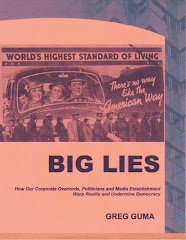Albert Parsons, one of four Chicago organizers hung in November 1887 for the Haymarket bombing, knew that winning the eight-hour workday was only a stopgap measure. In fact, he predicted how business would respond: "Employers will put labor-saving machinery to work instead of the higher-priced laborers. The laborers will then for the same reason that they reduced the hours to eight, have to reduce them to six hours per day." He also linked the domestic struggle to emerging global trends. The elite view was that employment could only be expanded through finding new foreign markets; that meant keeping wages low to compete internationally. But Parsons and others argued that this would only depress purchasing power, ultimately destroying jobs both at home and overseas.
More than a century later, his analysis is still on target. Under the impacts of globalized "free trade" and increased automation, millions of jobs are at risk. In the US, the impact is felt in major corporate layoffs, hiring freezes, and plant relocations. Meanwhile, despite technological advances, the average number of hours most people work has increased. If the current trend continues, US employees will soon be spending as much time at their jobs as they did back in the 1920s.
Reading the business pages of most local newspapers, you could be left with the impression that, despite a “recession” now and then, things have rarely been better. But it all depends on whose facts and statistics you prefer. Under-employment is a serious problem, for example, and almost 20 percent of all US workers earn less than a livable wage. The income gap between men and women has been rising again, just as the number of female-headed households increases. These factors, plus the absence of employee benefits for about half of all part-timers, deepen the feminization of poverty.
Computers and other "labor-saving" machines allow companies to eliminate whole job categories, while employing a smaller work force for longer hours. Even paying time and a half overtime, they come out ahead. In US factories, the hours of work have increased as the number of employees has steadily declined. In Europe, where unemployment is higher, this trend has led to the rallying cry: Work Less, and Everyone Works. In Japan, the government has made shorter hours a national goal, realizing not only that it deals with technological displacement but also that more leisure time stimulates the service economy. Yet, US business leaders remain adamantly opposed, arguing that staying "competitive" could require even longer hours.
Echoing the eight-hour day campaign, a movement to reduce the workweek may well be labor's key to recapturing public confidence. Why? Largely because the lack of free time has become a serious issue for parents and communities. Some studies say that a third of the country's youngsters are caring for themselves. Along with a decline in the amount of time parents spend with their kids has come an "abandonment" syndrome, manifesting itself in increasing childhood depression, delinquency, violence, drug abuse, and even suicide.
Women in the US work an average of around 80 hours a week, on the job and in the home. Not surprisingly, they are especially receptive to the prospect of less work and more free time. Although equal pay is their short-term concern, a resurgence of the US labor movement may ultimately hinge on organizing with women around a shorter workweek. Such a campaign would clearly demonstrate that unions are concerned with more than their own members. It could also unite them with parenting, social justice, neighborhood, and women's groups. One small step in this direction is legislation that would discourage the use of overtime as a way to avoid providing benefits for additional employees. The longer-term solution is a 30-hour week, and linking a higher minimum wage to the consumer price index.
Putting millions to work, a shorter week would result in dramatic savings in unemployment compensation and welfare payments. The impact on culture, commerce, and family life would be even more profound. Actually, the choice is fairly clear: As machines continue to replace human beings in most industries, it is either longer hours for the remaining "lucky" employees, with many left jobless or underemployed, or giving more people the chance both to share the available work and reconnect with their families. If organized labor can improve its image and resist drives to muzzle it, we still have a chance to change course before too much more damage is done.
Henry Demarest Lloyd, an early critic of monopolies and loyal friend of labor, summed it up in 1893. Defending the right to organize and an eight-hour day, he remarked that uniting with others in common cause is the law of life. "Individuality becomes possible only by association," he explained. "Man isolated, would be man the brute ... But every new tie gives a new individuality. And every attempt on the part of those who are the buyers of labor to prevent the sellers from uniting to promote and protect their interests, is an attempt to de-humanize the worker and decivilize the world."
Fortunately, the dehumanization isn't complete. And despite the setbacks, the long struggle to civilize the world of work can still be won.
Part six of “May Day, Labor, and the First Red Scare”































No comments:
Post a Comment